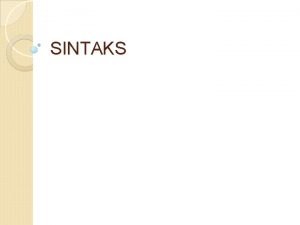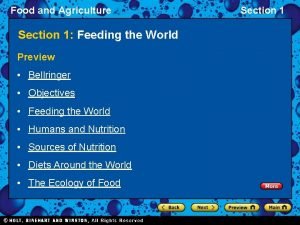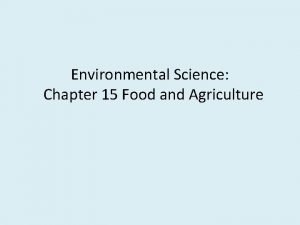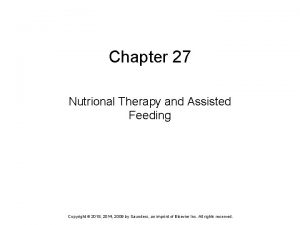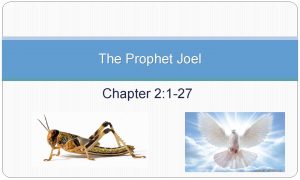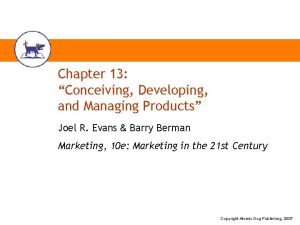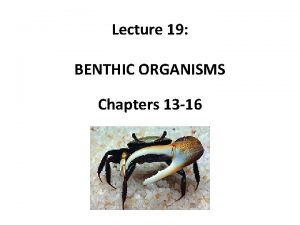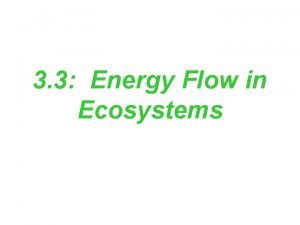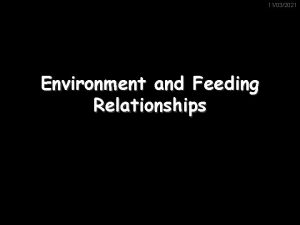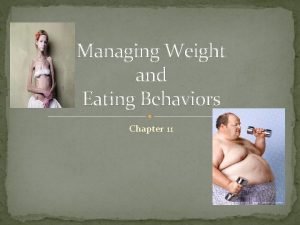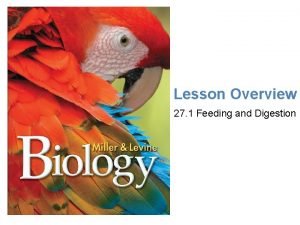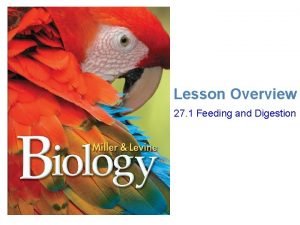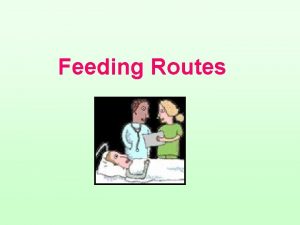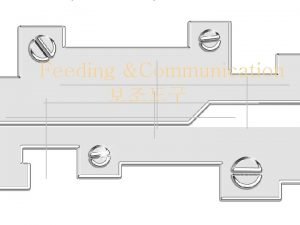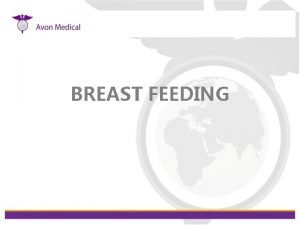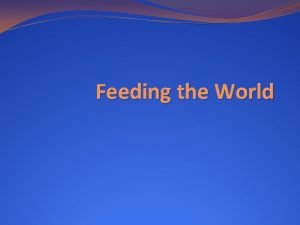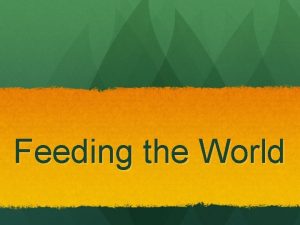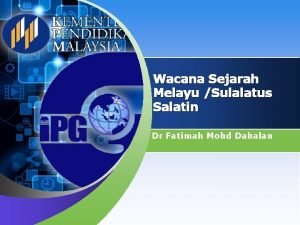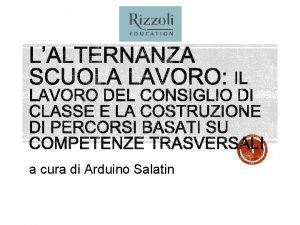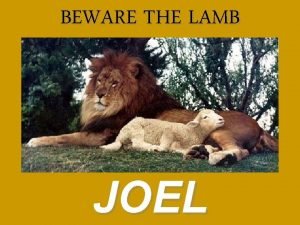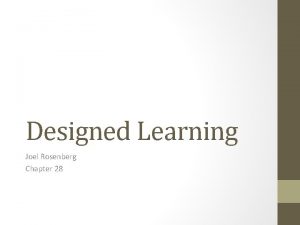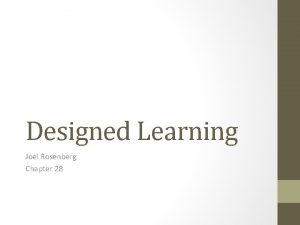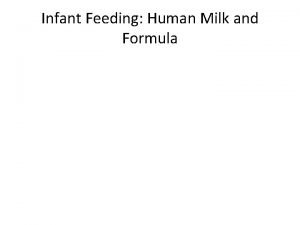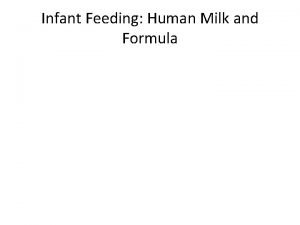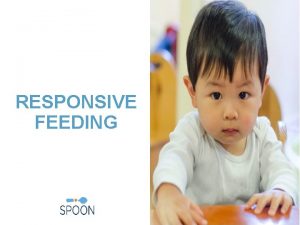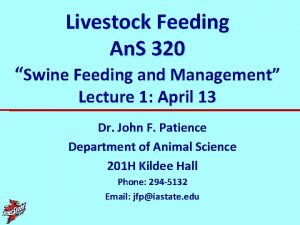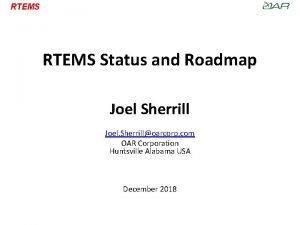Chapter 11 Feeding the World Joel Salatin and






































- Slides: 38

Chapter 11 Feeding the World

Joel Salatin and Polyface Farm • http: //www. youtube. com/watch? v=Kx. Tf. Qpv 8 x. GA

24, 000 people starve to death daily

1993 by Kevin Carter in Sudan during famine. Child attempting to reach a feeding center.

Nutritional Requirements • An average person requires 2, 200 Kilocalories /day to perform daily activities. • With extended food deficit, a person gets deprived of energy and becomes more susceptible to disease; especially children. • According to WHO, approx. ½ of the world’s population is malnourished- lacking the correct balance of proteins, carbs. , vitamins, and minerals. (different than undernourished)

• Food Security- when people have access to sufficient, safe and nutritious food that meets their dietary needs for an active and healthy life. • Food Insecurity-people do not have access to(economic, social and physical availability) to food. • Famine-extreme food insecurity that leads to a large number of deaths over a short period of time. • Anemia- Fe deficiency is the most widespread nutritional deficiency in the world. (Grains, herbs, vegetables and meat can reduce anemia)

Over 1 billion are overweight!

Humans Eat a variety of Food • Grains are the largest component of the human diet (corn, rice, wheat, rye) • Meat is the 2 nd largest (beef, veal, pork, and lamb) and poultry (chicken, turkey and duck)

Reasons for Under and Malnutrition #1 reason is POVERTY! The lack of resources that allows one access to food as well as distribution Political and economic factors play an important role as well. (Refugee populations, Hurricane) Large amounts of agricultural resources are diverted to feed livestock and poultry rather than people. Global grain production per capita has been level.

The Energy Subsidy in Agriculture • Fossil fuel and human energy are both needed in order to grow, harvest, produce and prepare food. The energy input per calorie of food produced is called energy subsidy. • Small scale agriculture requires a small amount of energy subsidy. • Modern agriculture requires significantly more energy in the form of fossil fuels. Approx. 10 calorie energy input for every calorie eaten.

Green Revolution • The average food item travels 1240 miles from the farm to your plate! So we spend far more energy on transporting food than from the food itself. • The Green Revolution was a shift in farming methods from physical labor to mechanized large industrial operations during the 20 th century. This also included fertilization, irrigation and improved crop varieties. These changes increased food production and more people were fed.

Mechanization • In developed countries less than 5% of the workforce works in agriculture. • In developing countries 40 -75% of the working population is employed in agriculture. • Mechanization led to large farms producing staple crops that were more profitable than small farms due to the economies of scale (average cost of production fall as the output increases). Especially true of single crop farms.

Irrigation • 16% of the world’s agricultural land is irrigated and produces 40% of the world’s food. While irrigation uses water more efficiently, and brings water to places where it it scarce, it an also deplete groundwater and draw down aquifers, cause salt water intrusion and contribute to soil degradation through water logging and salinization.

Fertilizers • Fertilizers are used to replace lost organic matter and nutrients as agriculture depletes them. • Fertilizers contain essential nutrients for plantsmainly N, P, and K. • Organic fertilizers-are composed of organic matter from plants and animals (manure and crop waste) • Synthetic or inorganic fertilizers are produced commercially. Easy to apply, can target nutrients needed by a certain crop, and plants easily absorb them. However, when in runoff, they cause algae and other organisms to grow and can lead to eutrophication.

Monocropping • Dominant agricultural practice in the US with wheat and cotton. • Allows large expanses of land to be planted and then harvested at the same time. • Can lead to environmental degradation through soil erosion and pest infestation • Monocropping removes habitats for predators that might control the pest population.

Pesticides • Kill or control organisms that people consider to be pests. They can be natural or synthetic. • Insecticides target insects, herbicides target plants that compete with crops. Some are broad-spectrum some are selective • The use of pesticides has made agriculture more efficient but with consequences: Some are persistent (remain for a long time) like DDT that bioaccumulates and gets transferred to consumers. Pests become resistant to applications May kill organisms that benefit farmers such as pollinators, and or enter groundwater.

Pesticide Treadmill

Genetic Engineering • GMO crops and livestock can create greater yield and food quality, reduce pesticide use, and increase profits for the business that use them. • Some people have safety concerns about GMO, but there has been no evidence to support harm • Some claim it will have negative effects on biodiversity. • There are no regulations in the US for GMO.

Alternatives to Industrial Farming Methods • Shifting agriculture-clearing land using it for a few years until the soil is depleted of nutrients. Then slash and burn to deforest a new area and begin again. • After a while desertification occurs through these unsustainable farming practices and the soil is used for nomadic grazing

Sustainable Farming

Sustainable Agriculture methods: • Fulfills the need for food and fiber while enhancing the quality of the soil, minimizing the use of nonrenewable resources, and allowing economic viability for the farmer. • Often requires more labor than industrial ag. so cost goes up. • Intercropping- 2 or more crop species are planted in the same field at the same time to promote a synergistic interaction between them. Ex: corn and peas • Crop Rotation-rotates the crop species in a field from season to season ex: peas and corn.

Sustainable Farming Methods Continued • Agroforestry-Intercropping trees with vegetables. Trees acts as wind breakers and catch soil from blowing away, preventing erosion while bearing fruit and firewood. • Contour plowing-plowing and harvesting parallel to the topographic contours of the land helps prevent erosion by water. • No-Till Agriculture-Farmers leave crop residues in the field between season and the intact roots holds soil in place preventing erosion and reduces CO 2 emissions.

Sustainable Faming Methods Agroforestry Contour Plowing Intercropping

No-Till Agriculture

Integrated Pest Management • IPM uses a variety of techniques designed to minimize pesticides inputs. • Crop rotation, intercropping and the use of pestresistant crop varieties prevent pest infestation. Agroforestry can provide habitats for pest eating birds. • Farmers make observations early on and treat pests as needed only. This has yielded a higher crop production and a significant reduction in pesticide use.

Organic Agriculture • Is the production of crops without the use of synthetic fertilizers or pesticides. • Uses ecological principles and works with the natural systems rather than dominating them. • Keeps as much organic matter and as many nutrients in the soil on the farm as possible. • Maintains the soil by increasing soil mass, biological activity, and beneficial chemical properties. • Reduces the adverse environmental effects of agriculture.

High Density Animal Farming • Concentrated animal feeding operations (CAFOs)- is a high density animal farming method that keeps large quantities of animals in indoor and outdoor structures designed for maximum output.

Free Range Chicken and Cows • Are less likely to spread disease, thus don’t require antibiotics • Animals graze on natural land return nutrients to the soil through manure. But does require a greater amount of land thus more expensive.

Harvesting of Fish and Shellfish

Fisheries-a commercially harvestable population of fish w/in a particular ecological region Fish do not belong to any country or nation therefore there is no incentive to protect them. This has led to a dramatic decline in fish populations. Salmon Spawning in a fishery


Fishery Collapse • In 2006, it was noted that 30% of fisheries worldwide had experienced a 90% decline in fish population. • Most marine fish are now caught by large nets, or by long fishing lines bearing 100 s of large hooks. Those living close to the bottom are caught by dragnets. • Dragnets damage the ocean bottom habitats by destroying coral, sea sponges and plants. • Leads to the loss of juvenile fish of the target species as well as the loss of non-targeted species (BYCATCH)

Turtle “Bycatch”

Seal “Bycatch”

Everything “Bycatch”

Once these animals are caught in the nets they cannot swim back out. They then drown because they cannot swim to the surface for air. The highest rates of bycatch are linked to shrimp trawling. Ratios of bycatch to usable catch have been estimated to be as high as 20: 1 (Clucas 1997). Some have estimated that 20, 000 tons of bycatch are caught and discarded every year. These enormous values of incidental catch are due to the fact that trawl nets are simply dragged through the pelagic area (open ocean) and this is where most larger animals, such as cetaceans, sharks and sea turtles, spend most of their lives.

Sustainable Fisheries Act of 1996 • The act calls for the protection of critical marine habitat which is important for both commercial fish species and non-target species. If a species is considered to be in danger , there can be no fishing until the population recovers. • Individual transferable Quotas(ITQs) give quotes to the total allowable amount of catch.

Aquaculture • The farming of aquatic organisms such as fish, shellfish, and seaweeds. It usually requires keeping the organisms in enclosures and providing them with food antibiotics. • Most of the catfish, trout and ½ of the shrimp and salmon are produced this way. • Can alleviate stress on overexploited fisheries. • Their waste water can contaminate the rivers or oceans, may harm wild fish populations by spreading disease.
 Panalungat halimbawa
Panalungat halimbawa Abbott feeding pump error codes
Abbott feeding pump error codes Section 1 feeding the world
Section 1 feeding the world Feeding the world active reading
Feeding the world active reading Chapter 27 nutritional therapy and assisted feeding
Chapter 27 nutritional therapy and assisted feeding Chapter 18 eating and feeding disorders
Chapter 18 eating and feeding disorders Ap world history chapter 25 africa and the atlantic world
Ap world history chapter 25 africa and the atlantic world Joel chapter 2
Joel chapter 2 Joel chapter 13
Joel chapter 13 Suspension feeding
Suspension feeding Simple ecosystem
Simple ecosystem Environment and feeding relationship
Environment and feeding relationship Oral placement therapy
Oral placement therapy Chapter 11 health vocabulary
Chapter 11 health vocabulary Lesson 11: feeding and digestion
Lesson 11: feeding and digestion Lesson 11: feeding and digestion
Lesson 11: feeding and digestion Hình ảnh bộ gõ cơ thể búng tay
Hình ảnh bộ gõ cơ thể búng tay Ng-html
Ng-html Bổ thể
Bổ thể Tỉ lệ cơ thể trẻ em
Tỉ lệ cơ thể trẻ em Voi kéo gỗ như thế nào
Voi kéo gỗ như thế nào Tư thế worm breton
Tư thế worm breton Hát lên người ơi alleluia
Hát lên người ơi alleluia Các môn thể thao bắt đầu bằng từ đua
Các môn thể thao bắt đầu bằng từ đua Thế nào là hệ số cao nhất
Thế nào là hệ số cao nhất Các châu lục và đại dương trên thế giới
Các châu lục và đại dương trên thế giới Cong thức tính động năng
Cong thức tính động năng Trời xanh đây là của chúng ta thể thơ
Trời xanh đây là của chúng ta thể thơ Mật thư anh em như thể tay chân
Mật thư anh em như thể tay chân 101012 bằng
101012 bằng độ dài liên kết
độ dài liên kết Các châu lục và đại dương trên thế giới
Các châu lục và đại dương trên thế giới Thơ thất ngôn tứ tuyệt đường luật
Thơ thất ngôn tứ tuyệt đường luật Quá trình desamine hóa có thể tạo ra
Quá trình desamine hóa có thể tạo ra Một số thể thơ truyền thống
Một số thể thơ truyền thống Cái miệng nó xinh thế
Cái miệng nó xinh thế Vẽ hình chiếu vuông góc của vật thể sau
Vẽ hình chiếu vuông góc của vật thể sau Biện pháp chống mỏi cơ
Biện pháp chống mỏi cơ đặc điểm cơ thể của người tối cổ
đặc điểm cơ thể của người tối cổ
